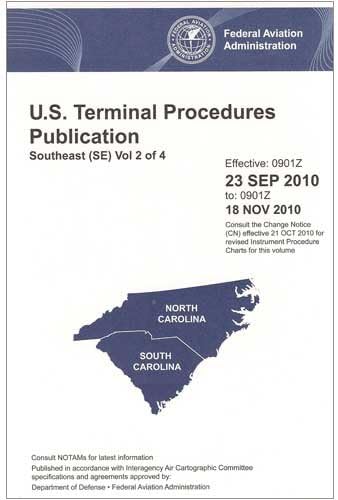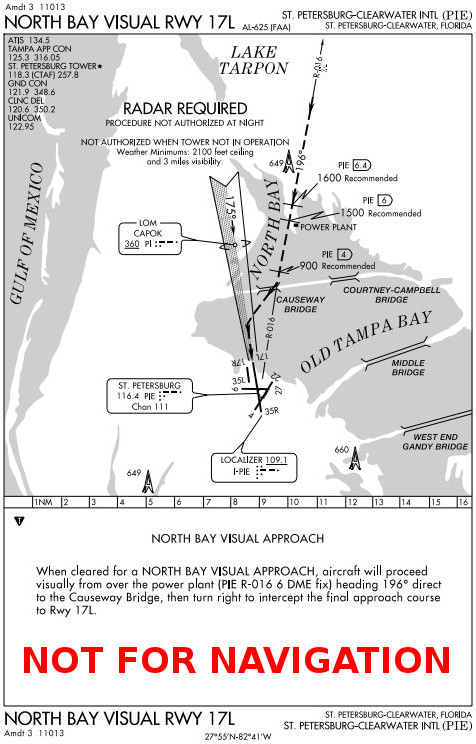Charted Visual Flight Procedure (CVFP)
Charted Visual Flight procedures are established for environmental considerations, permitting the safety and efficiency of air traffic operations.
Introduction to Charted Visual Flight Procedures
- A visual approach is a procedure for a runway at an airport conducted under Instrument Flight Rules (IFR), where the pilot proceeds by visual reference and is clear of clouds to the airport.
- The Federal Aviation Administration publishes Charted Visual Flight Procedures (CVFPs) for environmental/noise considerations and/or when necessary for the safety and efficiency of air traffic operations.
- Designed primarily for turbojet aircraft.
- Located from various sources, these procedures outline what pilots should follow.
- CVFPs are not instrument approaches and do not have a Missed Approach Point (MAP).
- Unless indicating a class Bravo airspace floor, all depicted altitudes are for noise abatement purposes and recommended only.
- Pilots may fly at altitudes other than those recommended if operational requirements dictate.
- ATC may assign additional restrictions.
Charted Visual Approach Procedure Purpose
- CVFPs are when the Air Traffic Control (ATC) facility manager, in coordination with airport management, determines that the procedure would mitigate aircraft noise or improve safety and efficiency.
- The FAA develops a CVFP only after exhausting all PBN approach options.
Locating Charted Visual Approach Procedures
- The FAA publishes CVFPs online at: https://www.faa.gov/air_traffic/flight_info/aeronav/digital_products/dtpp/. [Figure 1]
Charted Visual Approach Procedure Depiction
- Depict prominent landmarks, courses, and recommended altitudes to specific runways.
- Most charts depict some Navigational Aid (NAVAID) information for supplemental navigation guidance, beginning within 20 Nautical Miles (NM) from the airport.
Charted Visual Approach Procedure Requirements
- There is an operating control tower.
- ATC will not issue clearances for CVFPs when the weather is less than the published minimum
- When using parallel or intersecting/converging runways, the criteria specified in JO 7110.65 (7-4-4), Approaches to Multiple Runways, are applied.
- An aircraft not following another aircraft on the approach reports sighting a charted visual landmark, or reports sighting a preceding aircraft landing on the same runway, and has been instructed to follow that aircraft.
- If instructed to follow a preceding aircraft, pilots are responsible for maintaining a safe approach interval and wake turbulence separation.
- When landmarks used for navigation are not visible at night, the approach will be annotated "procedure not authorized at night."
Charted Visual Approach Procedure Clearance
- ATC: "[Callsign], cleared [Approach] approach."
- Pilots should advise ATC if at any point they are unable to continue an approach or lose sight of a preceding aircraft.
- Air Traffic Control handles missed approaches as go-arounds.
- Have pre-planned climb-out options based on aircraft performance and terrain features.
- When conducting visual approaches, pilots are encouraged to use other available navigational aids to assist in positive lateral and vertical alignment with the assigned runway.
Charted Visual Flight Procedures Conclusion
- To learn more about instrument procedures, be sure to check out the Instrument Procedures Handbook online or in paperback
.
- Pilots can visit the FAA's Instrument Flight Procedures Information Gateway to review and submit questions related to how and why certain procedures are as they are.
- Still looking for something? Continue searching:
Charted Visual Flight Procedures References
- Federal Aviation Administration Order (8260.61) Charted Visual Flight Procedures.
- Federal Aviation Administration - Pilot/Controller Glossary.
- Aeronautical Information Manual (5-4-24) Charted Visual Flight Procedure (CVFP).
- FAA - Digital - Terminal Procedures Publication (d-TPP)/Airport Diagrams
- Federal Aviation Regulations (91.155) Basic VFR Weather Minimums.
- Federal Aviation Regulations (91.157) Special VFR Weather Minimums.
- JO 7110.65 (7-4-4) Approaches to Multiple Runways.
- JO 7110.65 (7-4-5) Charted Visual Flight Procedures (CVFP). USA/USN NOT APPLICABLE.
- CFI Notebook.net - Class Bravo Airspace.

